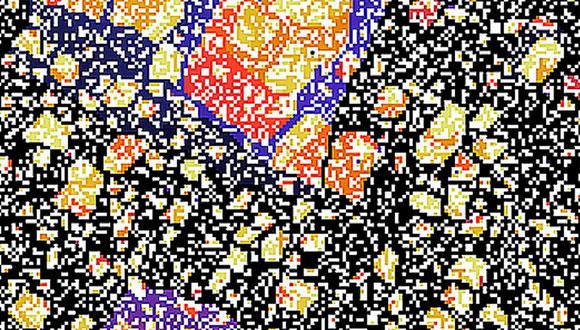Biological & Soft Matter Seminar: There is no Place to Hide: Single Particle Tracking from Atoms to Organelles
Prof. Don Lamb, Ludwig Maximilians, University of Munich, Germany
Abstract:
Following single particles is a very powerful way to gain knowledge of how biological systems function. In this presentation, I will discuss several different approaches to and applications of single particle tracking.
In the first part of the talk, I will discuss our investigations of viral assembly and entry. Here, we used ex post facto approaches to follow the assembly of HIV. We identified different phases of the assembly processes and investigated at what stage HIV interacts with the cellular proteins needed for escape1. To investigate the first steps in HIV assembly within the cytosol, we resorted to Fluorescence Fluctuation Spectroscopy. We could show that Gag diffuses as a monomer on the subsecond timescale with reduced mobility. A second diffusive Gag species on the second-timescale was observed that oligomerized in a concentration-dependent manner. Our results reveal potential nucleation steps of cytosolic Gag fractions prior to membrane-assisted Gag assembly2.
At the opposite end of the lifecyle of a virus is viral entry. We investigated the entry pathway of Prototype Foamy Virus. Combining the advantages of single particle tracking with correlation spectroscopy, we could visualize the fusion process of Foamy Virus3. Interestingly, we discovered an intermediate state where the capsid and envelope of the virus are separated by hundreds of nanometers, but are still attached.
As an intermezzo, I will briefly describe the tracking approach we used to follow single atoms from video-rate scanning tunneling microscopy images. Using a wavelet approach, we could overcome several difficulties with the inherently noisy data and follow the motion of a single oxygen atom on a crowded CO covered surface4.
In the last portion of this talk, I will talk about our orbital tracking approach5. Using orbital tracking, we could follow endosomal transport in living cells. By combining SPT with super-resolution imaging, we could correlation the transport properties of endosomes with their ability to overcome obstacles6. Due to the advantages of feedback tracking, we also used orbital tracking to follow the transport of mitochondria in living zebra-fish embryos over distances > 100 µm. Using this instrument, we could detect transport processes that were not observable previously as well as roadblocks in the transport process7. In our most recent work, we have extended our orbital tracking microscope for multiple color tracking. It is now possible to track two independent objects in close vicinity or perform spectroscopic measurements while tracking. Hence, it is now possible to follow individual objects with nm-accuracy in three dimensions in multiple-colors in real time in living organisms, which opens a whole new world for scientific investigation.
-
(a) Baumgärtel, V.; Ivanchenko, S.; Dupont, A.; Sergeev, M.; Wiseman, P. W.; Kräusslich, H.-G.; Bräuchle, C.; Müller, B.; Lamb, D. C. Nature Cell Biology 2011, 13, 469(b) Ivanchenko, S.; Godinez, W. J.; Lampe, M.; Kräusslich, H.-G.; Eils, R.; Rohr, K.; Bräuchle, C.; Müller, B.; Lamb, D. C. PLoS Pathogens 2009, 5, e1000652.
-
Hendrix, J.; Baumgartel, V.; Schrimpf, W.; Ivanchenko, S.; Digman, M. A.; Gratton, E.; Krausslich, H. G.; Muller, B.; Lamb, D. C. J Cell Biol 2015, 210, 629.
-
Dupont, A.; Stirnagel, K.; Lindemann, D.; Lamb, D. C. Biophys. J. 2013, 104, 2373.
-
Henß, A. K.; Sakong, S.; Messer, P. K.; Wiechers, J.; Schuster, R.; Lamb, D. C.; Gross, A.; Wintterlin, J. Science 2019, 363, 715.
-
(a) Dupont, A.; Lamb, D. C. Nanoscale 2011, 3, 4532(b) Katayama, Y.; Burkacky, O.; Meyer, M.; Brauchle, C.; Gratton, E.; Lamb, D. C. Chemphyschem 2009, 10, 2458.
-
Verdeny-Vilanova, I.; Wehnekamp, F.; Mohan, N.; Sandoval Alvarez, A.; Borbely, J. S.; Otterstrom, J. J.; Lamb, D. C.; Lakadamyali, M. J Cell Sci 2017, 130, 1904.
-
Wehnekamp, F.; Plucinska, G.; Thong, R.; Misgeld, T.; Lamb, D. C. eLife 2019, 8.


